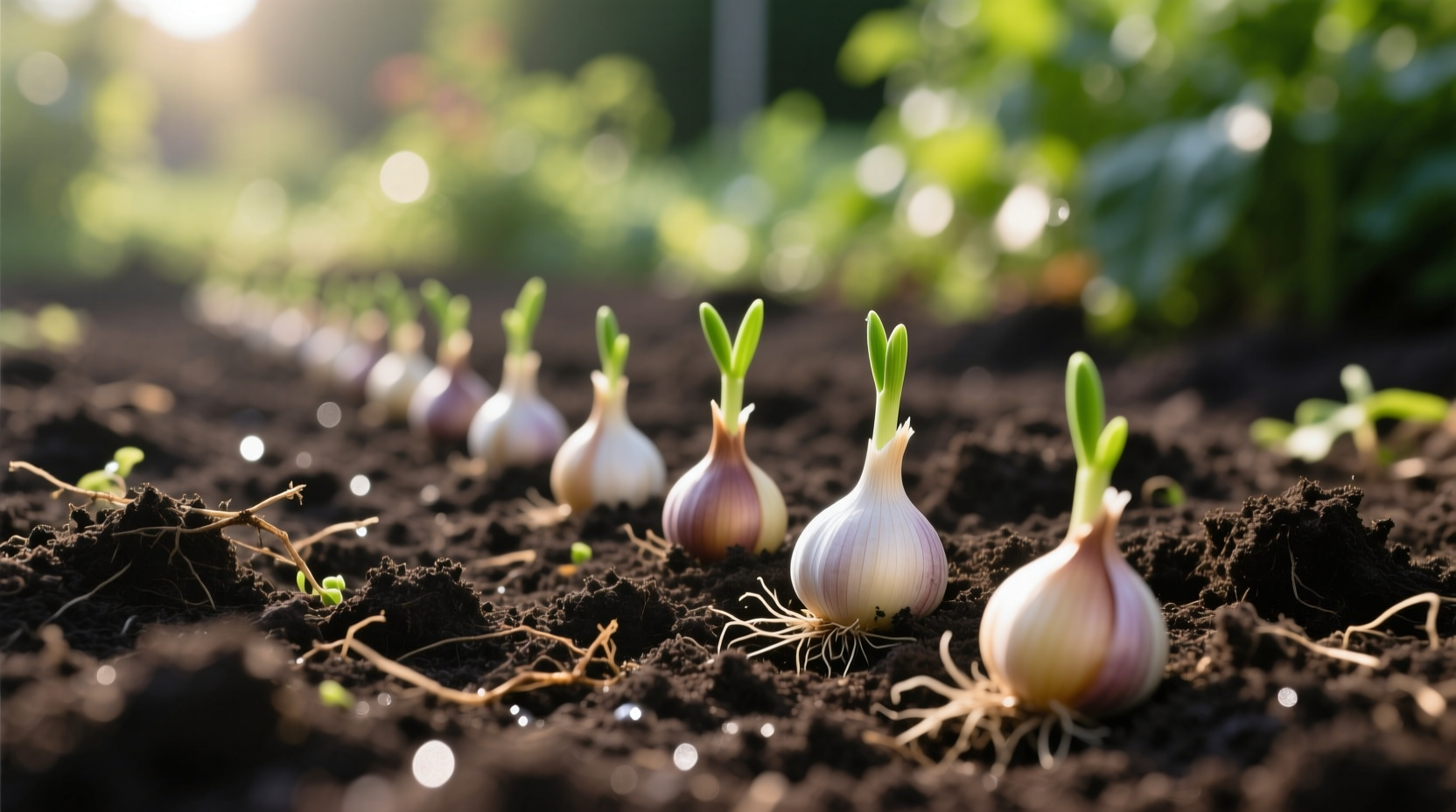The Science Behind Garlic Planting Depth
Getting the depth right for garlic planting isn't arbitrary—it's based on plant biology and environmental protection. When you plant garlic cloves at the proper 2-3 inch depth, you're creating ideal conditions for root development while protecting the cloves from winter freeze-thaw cycles that can damage emerging roots.
Garlic cloves need sufficient soil coverage to maintain consistent moisture levels and temperature. Too shallow, and the cloves risk exposure to cold snaps; too deep, and the emerging shoots struggle to reach sunlight, weakening the plant before it even begins proper growth. Research from the University of Minnesota Extension confirms that cloves planted at 2 inches in northern climates and 1.5-2 inches in southern regions produce the most uniform bulb development.

Adjusting Depth for Your Specific Conditions
While the standard recommendation is 2-3 inches deep, several factors require depth adjustments for best results:
| Condition | Recommended Depth | Reason |
|---|---|---|
| Cold climates (zones 3-5) | 3 inches (7.5 cm) | Extra soil provides insulation against harsh winters |
| Warm climates (zones 7-9) | 1.5-2 inches (4-5 cm) | Shallower depth prevents cloves from overheating |
| Sandy soil | 3 inches (7.5 cm) | Sandy soil provides less insulation and dries faster |
| Clay soil | 2 inches (5 cm) | Deeper planting in heavy soil makes emergence difficult |
Step-by-Step Planting Process
Follow these precise steps for perfect garlic planting depth every time:
- Prepare your soil - Loosen soil to 8-10 inches deep and mix in compost
- Mark planting spots - Space cloves 6-8 inches apart in rows 12-18 inches apart
- Create consistent holes - Use a dibber or your finger to make uniform 2-3 inch deep holes
- Position cloves correctly - Place each clove with the flat root end down and pointed tip up
- Verify depth - Measure from the top of the clove to soil surface (not from the bottom of the hole)
- Cover gently - Fill holes with soil without compacting
- Mulch appropriately - Apply 3-6 inches of straw or leaves after planting in cold climates
Common Planting Depth Mistakes
Even experienced gardeners make these depth-related errors when planting garlic:
- Planting too shallow - Results in cloves heaving out of soil during freeze-thaw cycles
- Inconsistent depth - Leads to uneven growth and harvest times
- Measuring from hole bottom - Forgetting that the clove itself adds height
- Ignoring soil type - Using same depth in clay as in sandy soil
- Planting upside down - Reversing the clove orientation wastes energy as sprout corrects direction
According to Cornell University's gardening resources, cloves planted upside down can take up to two weeks longer to emerge, significantly reducing final bulb size. The same study found that inconsistent planting depth within a single bed resulted in a 30% wider range of bulb sizes at harvest.
Seasonal Considerations for Planting Depth
Fall planting (the preferred method in most climates) requires slightly deeper planting than spring planting. When planting in autumn for next summer's harvest, aim for the deeper end of the 2-3 inch range to protect cloves through winter.
For spring planting in colder regions where fall planting isn't feasible, plant slightly shallower at 1.5-2 inches since the soil will warm more quickly. The Old Farmer's Almanac recommends adjusting planting depth based on your first expected frost date—plant deeper when planting more than 6 weeks before first frost.
Verifying Your Planting Depth
The most reliable method to check your garlic planting depth is the "two-knuckle test"—insert your index finger into the soil up to the second knuckle, which typically measures 2-2.5 inches deep. Place the clove in the hole and ensure the top sits at soil level when you remove your finger.
Alternatively, use a ruler or marked dibber for absolute precision. Professional garlic growers often use specialized planting tools with depth guides to ensure consistency across large plantings. For home gardeners, a simple tape measure alongside your first few plantings establishes the correct depth for the rest of your bed.
What Happens If You Get the Depth Wrong?
Planting too shallow (less than 1.5 inches):
- Cloves exposed to temperature fluctuations
- Increased risk of winter kill in cold climates
- Smaller bulb development due to stress
Planting too deep (more than 4 inches):
- Delayed or failed sprout emergence
- Weak, spindly growth as plant struggles to reach surface
- Increased risk of rot in heavy soils
Correcting depth issues after planting is difficult, which is why getting it right the first time matters. If you realize you've planted too shallow, carefully add more soil without disturbing the cloves. For overly deep plantings, it's generally better to leave them and monitor growth rather than risk damaging the cloves by adjusting.
Optimizing Your Garlic Harvest Through Proper Planting
While planting depth is crucial, it works in concert with other factors for maximum bulb development. Pair correct depth with these practices:
- Plant individual cloves (not whole bulbs) for proper spacing
- Use well-draining soil amended with organic matter
- Water consistently after planting until first frost
- Apply appropriate mulch after soil cools in fall
- Rotate planting locations annually to prevent disease buildup
Remember that garlic planted at the proper depth develops stronger root systems that access nutrients more effectively. This foundational growth directly translates to larger, more uniform bulbs at harvest time—typically 8-9 months after planting for fall-planted garlic.











 浙公网安备
33010002000092号
浙公网安备
33010002000092号 浙B2-20120091-4
浙B2-20120091-4